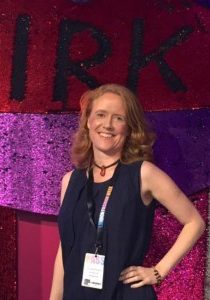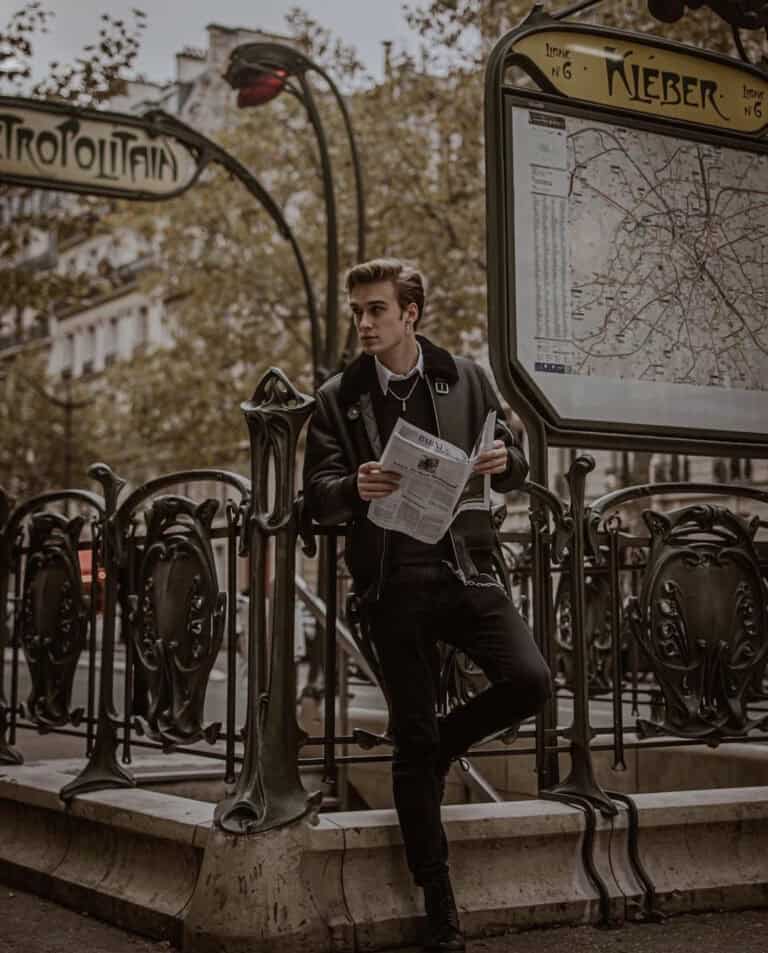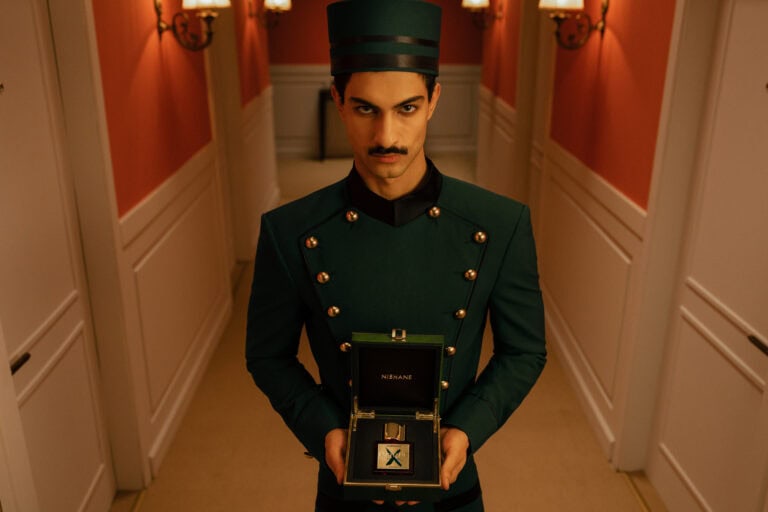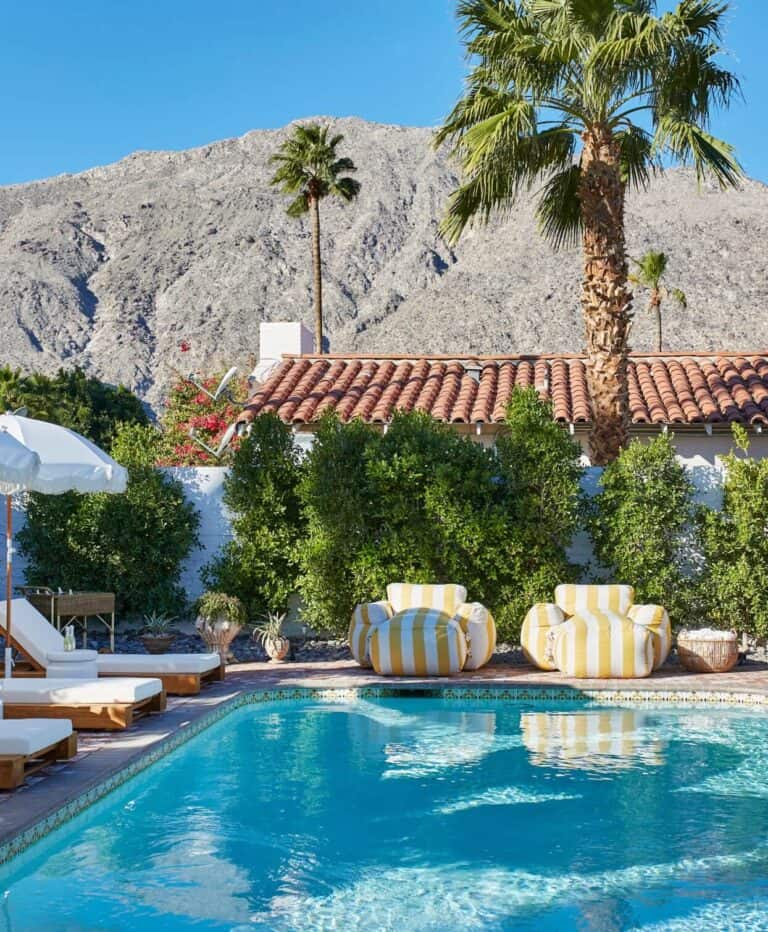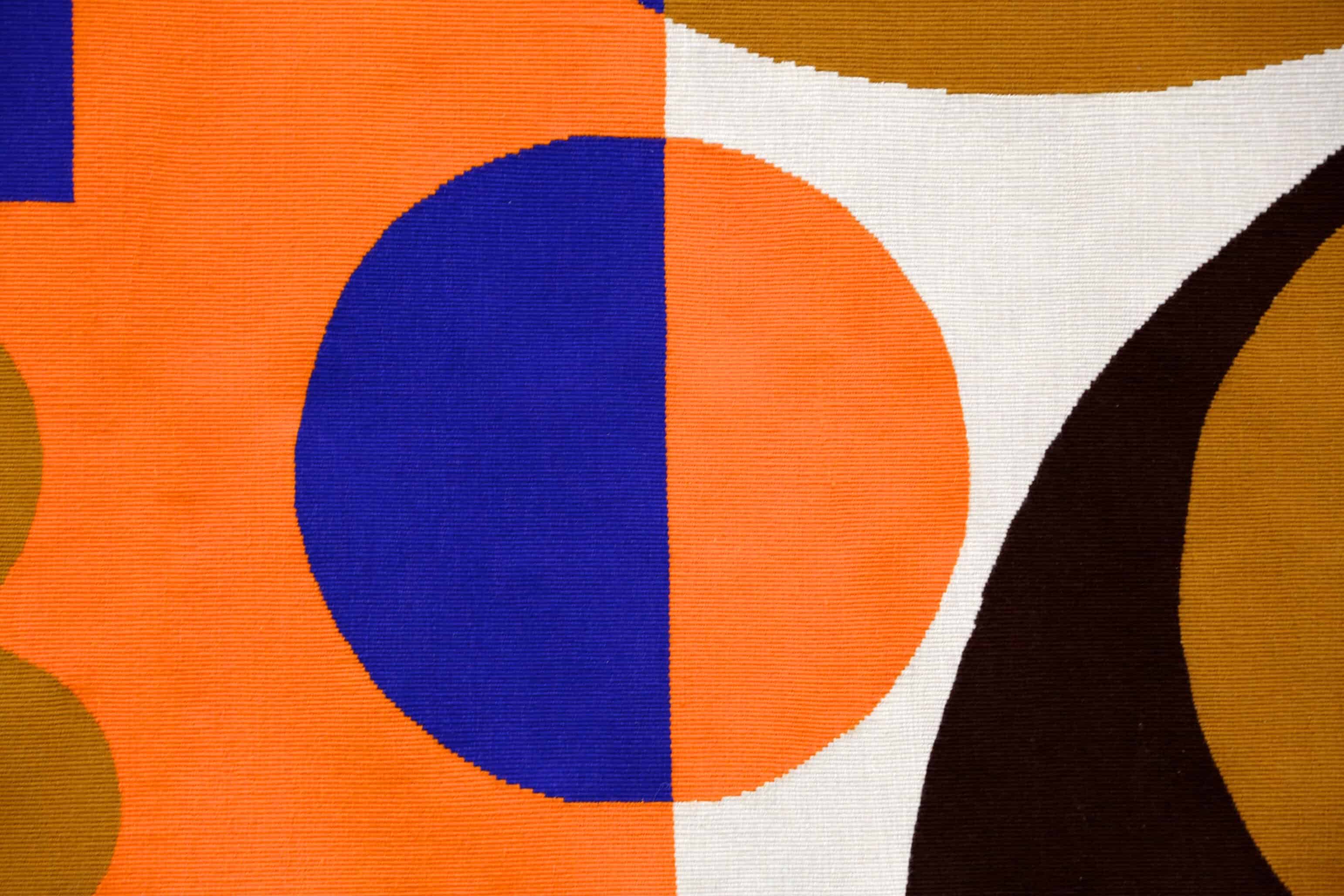
White Cube: Beatriz Milhazes
Natasha Hall
An exhibition by the Brazilian artist Beatriz Milhazes at the White Cube Bermondsey. Can be described as an interdisciplinary show of paintings, collages, sculptures and a rich tapestry interwoven with connections, contrasts and contradictions.
In an exclusive interview with IRK Magazine, the artist used the term equations from a dream to describe the inspiration for her paintings. She taught maths to children when she was very young. In her first works in art school, the titles were imaginary mathematical equations. She described how ‘sometimes life goes in circles. In all of the works there is a mathematical connection, but not a real mathematical connection, but magical. About how I can create with elements that actually come from life… a dreaming mathematics’. In 2012 Milhazes was in a group show entitled, ‘A Beautiful Elsewhere’ at the Fondation Cartier pour l’art Contemporain in Paris. In which mathematicians shared their thoughts on the most important mathematical questions with contemporary artists.
Her work has a visual connection to the work of her art historical influences. Such as the paper cut-outs of Matisse and the colourful compositions of Sonia Delaunay. The centrepiece of the exhibition is called ‘Rio Azul’, which means Blue River. It is interesting how the artist has decided not to translate the titles for gallery visitors. Milhazes described the difficulty of translating and the risk of misinterpreting the real meanings behind the works. The artist described how ‘with language it is sometimes so difficult to translate’.
For example, ‘Pó de arroz’, the largest one, is a facial powder, which is an old fashioned word. So it is totally connected with makeup. In the Portuguese language however, it takes you to a memory from the 50’s or 60’s, which takes you immediately into the past. So its title is evocative of the past and therefore more than a simple translation of the words. Therefore, as the meanings in the works exceed the limitations of the titles. The work of Beatriz Milhazes is considerable more depth than the sum of the bright, positive and seductive colours on their surface. Which results in a deeper and essentially evocative significance.
She has said that ‘I want to have optical movements, disturbing things. Such visions that your eyes would be disturbed when you see them.’ Creating what she has termed a ‘dialogue between symbolism and materiality’, achieved through a dense process of physical and conceptual layering. Her works amply an abundance of form and colour to offer a vertiginous visual experience.
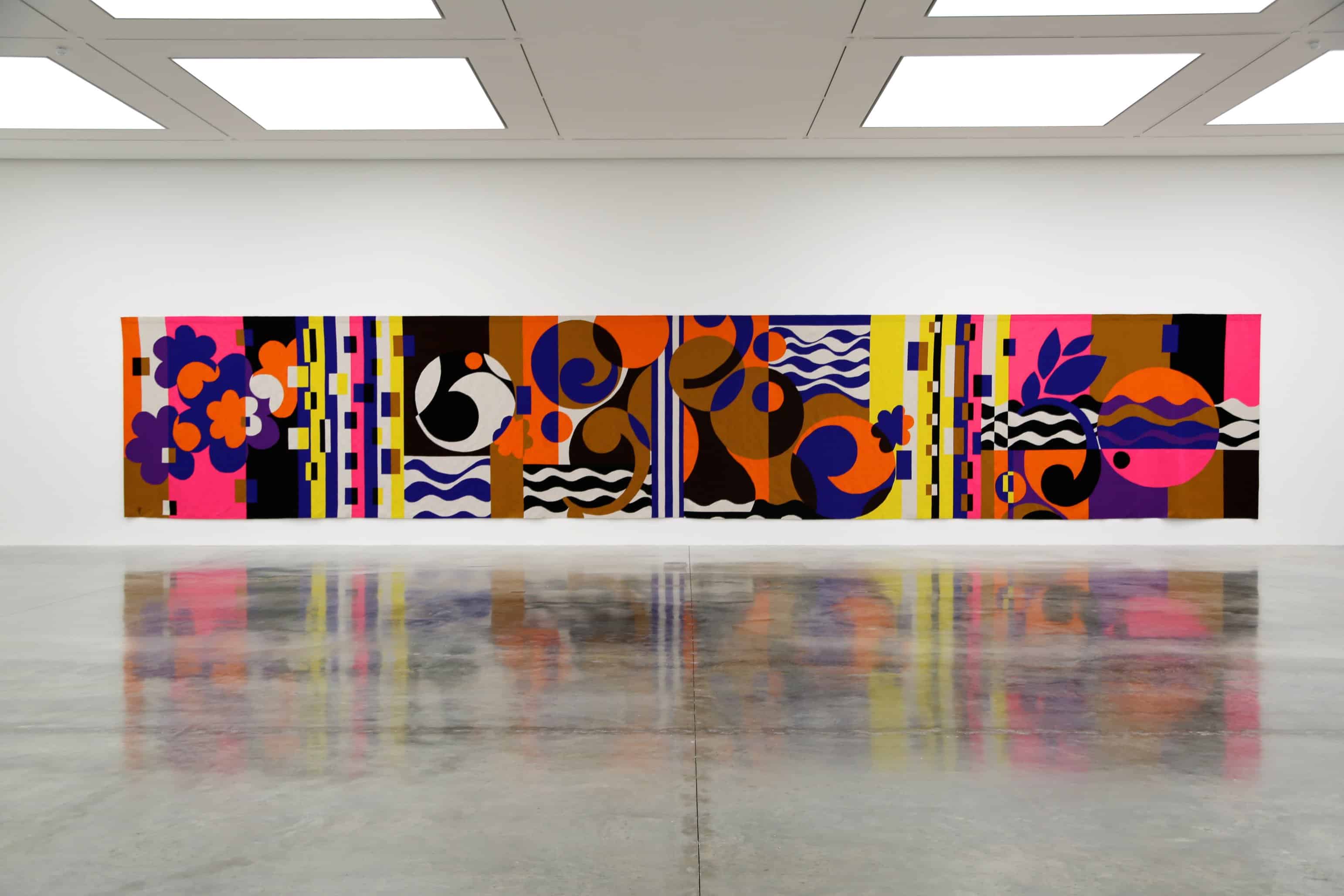
Rio Azul is the title of a large tapestry. Described is being inspired by the Landscape Architect Roberto Burle Marx. Which has been described as a kinetic landscape which took a year to make. Said to be the second largest ever made by Pinton Mill in France. It is constructed of hand dyed, multi-hued wool fibres. The artist described how when seeing a tapestry there was a click of connection. In which she totally understood how a tapestry can become part of architecture and a space. She appreciated how it could warm up and transform a space to become more than just something hanging on a wall.
The departure point of the work was that it was designed to be site specific to the White Cube gallery space. So the long wall naturally leaned towards a landscape format and theme. This was complemented by a concrete geometry of a sunrise, sunset form. With waves and a coastline evocative of the rhythm of a coastal landscape. The circles, leaves and flowers are reminiscent of Brazil’s natural flora. Whilst the geometric blocks and architectural forms introduce a reference to human landscape into the work.
The artist mentioned how as part of her painting process she normally doesn’t draw. Instead with the tapestry and sculptures, drawing became an essential method of communicating ideas when working in collaboration with others. Describing how her work is driven by process, initially the departure point is a drawing and a selection of colours, but in the collaborative works in which other people are making and constructing the works, they require extensive interaction and adjustments to arrive at the final design.
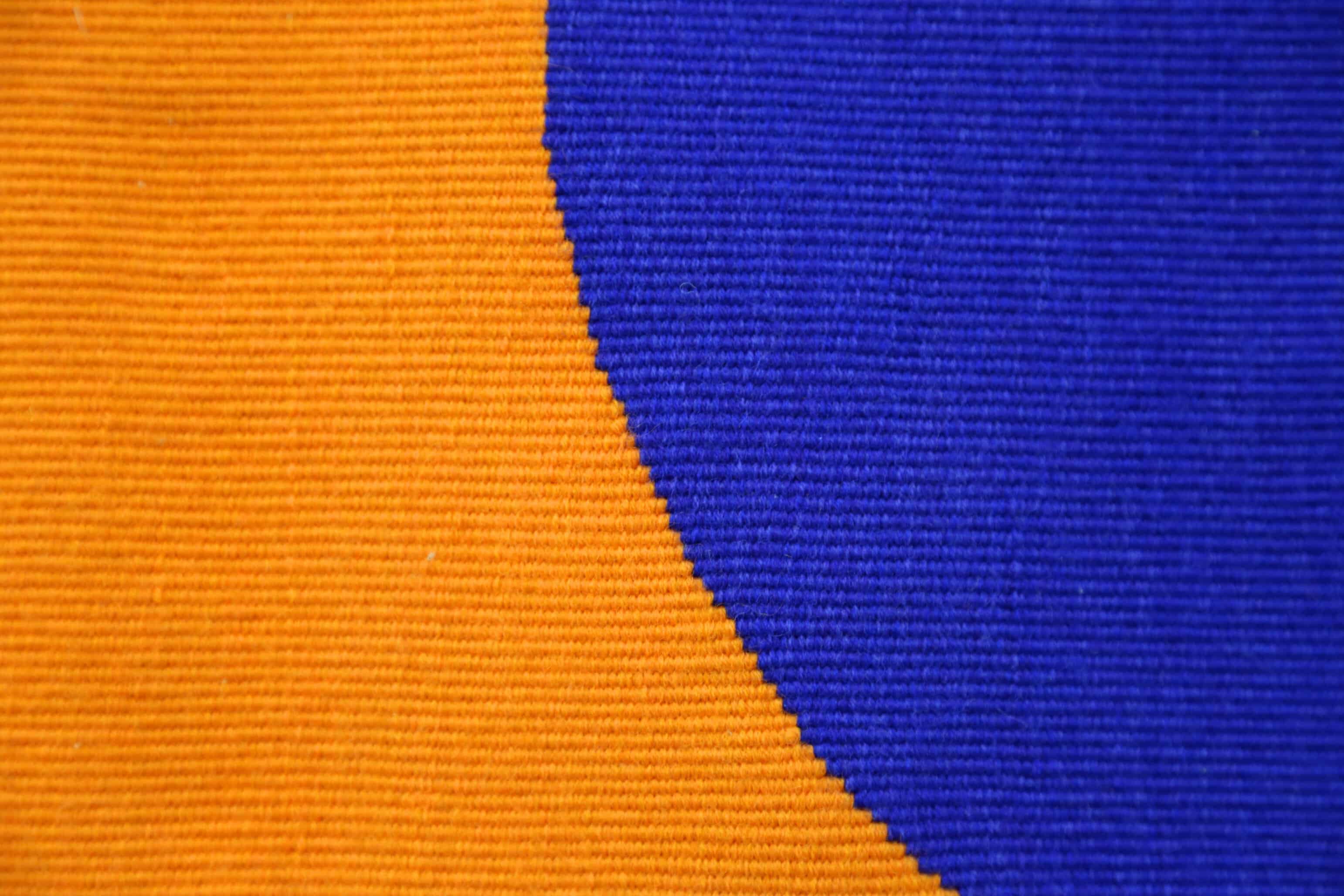
For example, the blue wool has six strands, and some are not blue, they are purple, so they are all different. They are all dyed at different moments but at the end of the day, they should be the same.
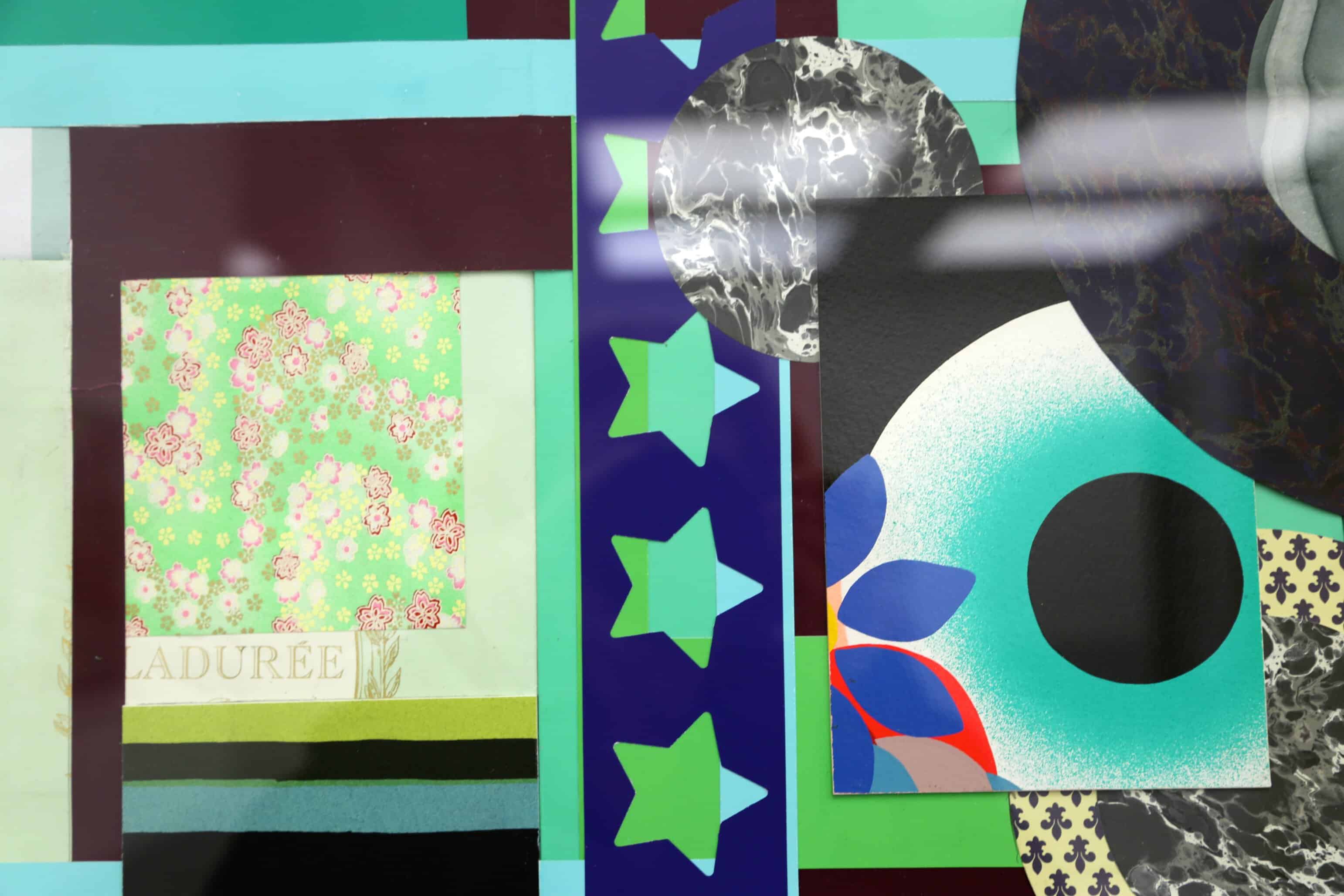
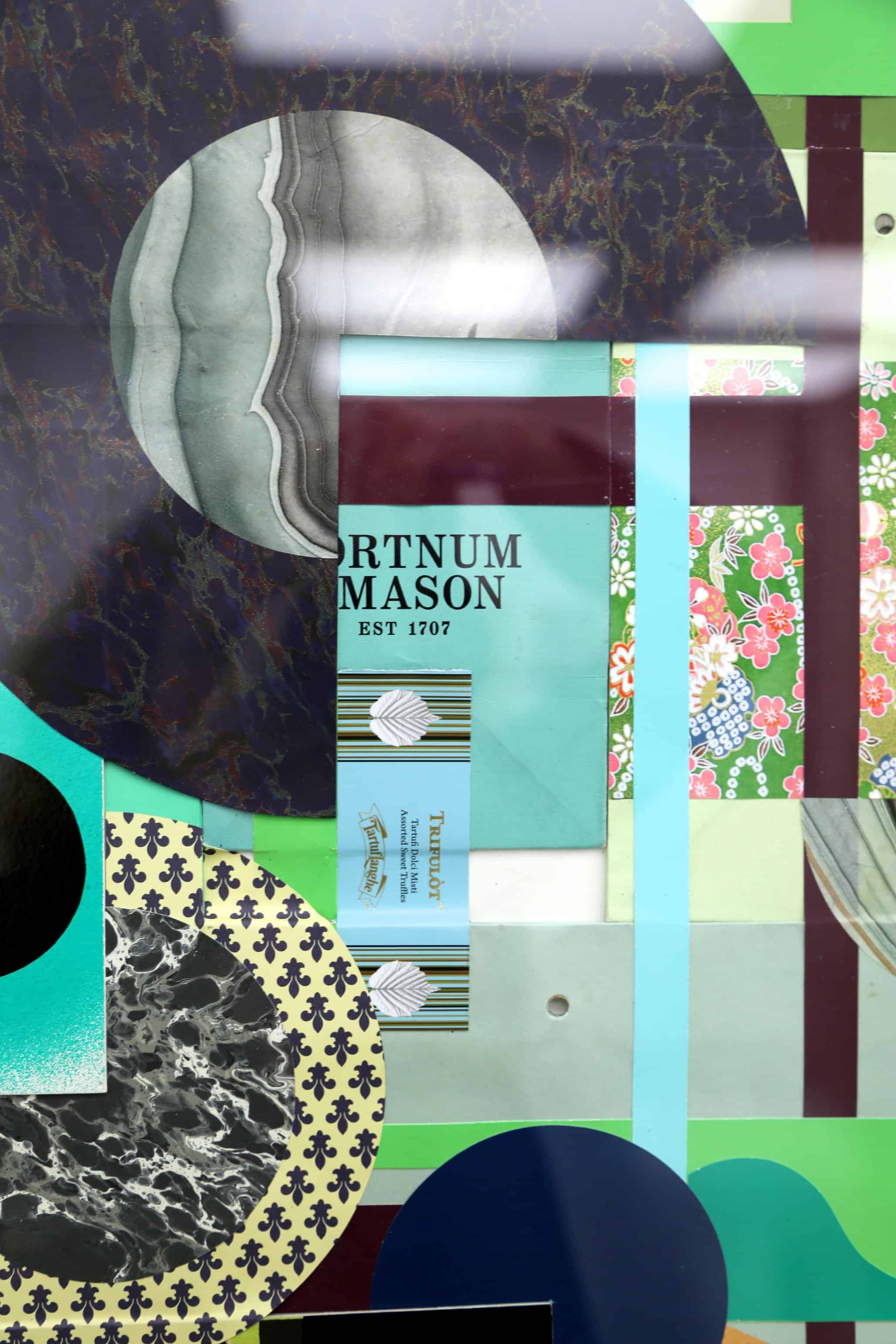
The collages use layers of Milhazes own screen prints. With found papers and labels that give reference to Fortnum and Mason’s iconic shop in Central London. The exuberant positivity in the colours, forms and constructions is a thread running through the collaborative and individual works.
The sculptures were the a result of a long process. Which took three years to make and consist of fine vertical threads, chandelier-like objects akin to mobiles. Composed of tactile, colourful found and made materials reminiscent of carnival processions.
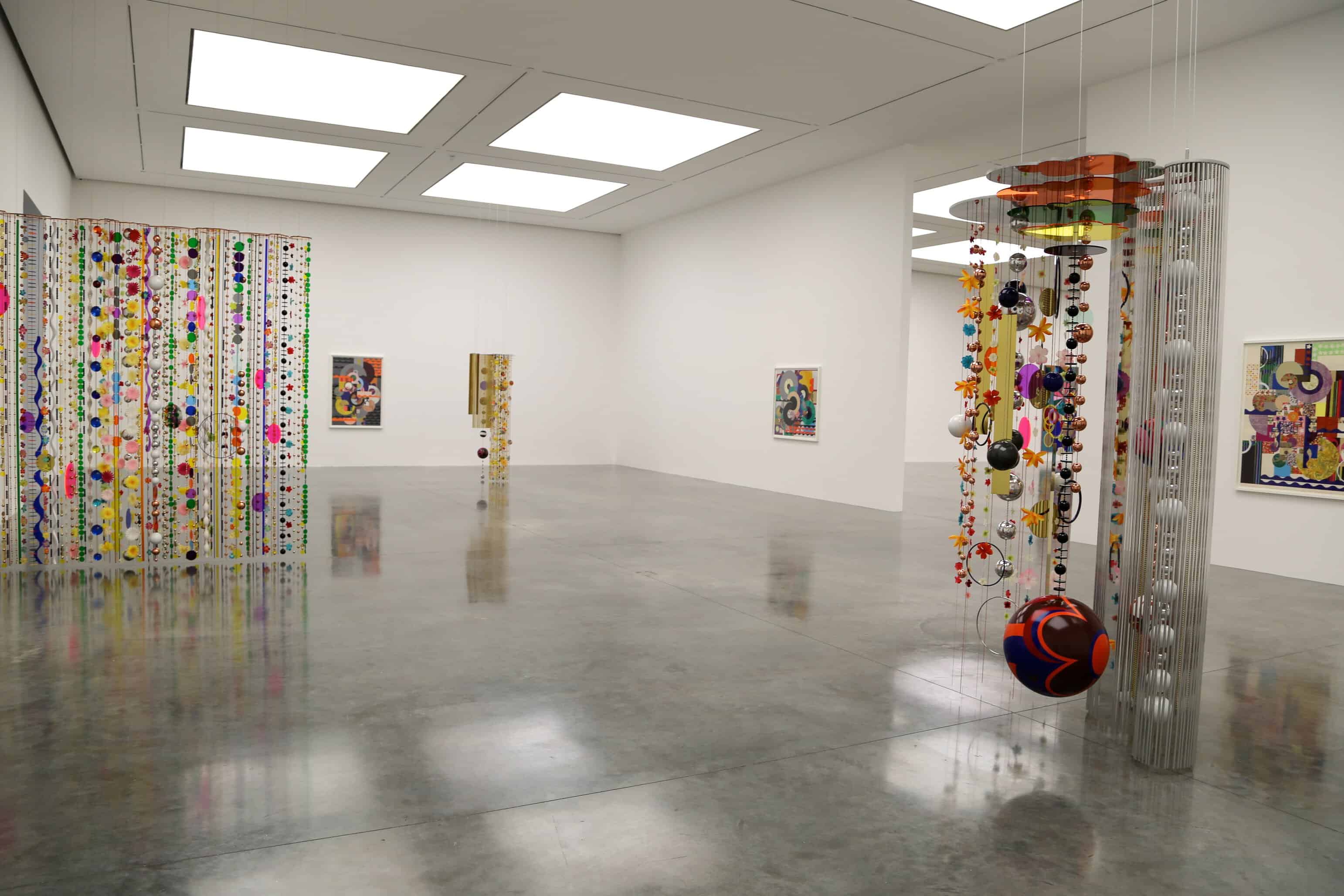
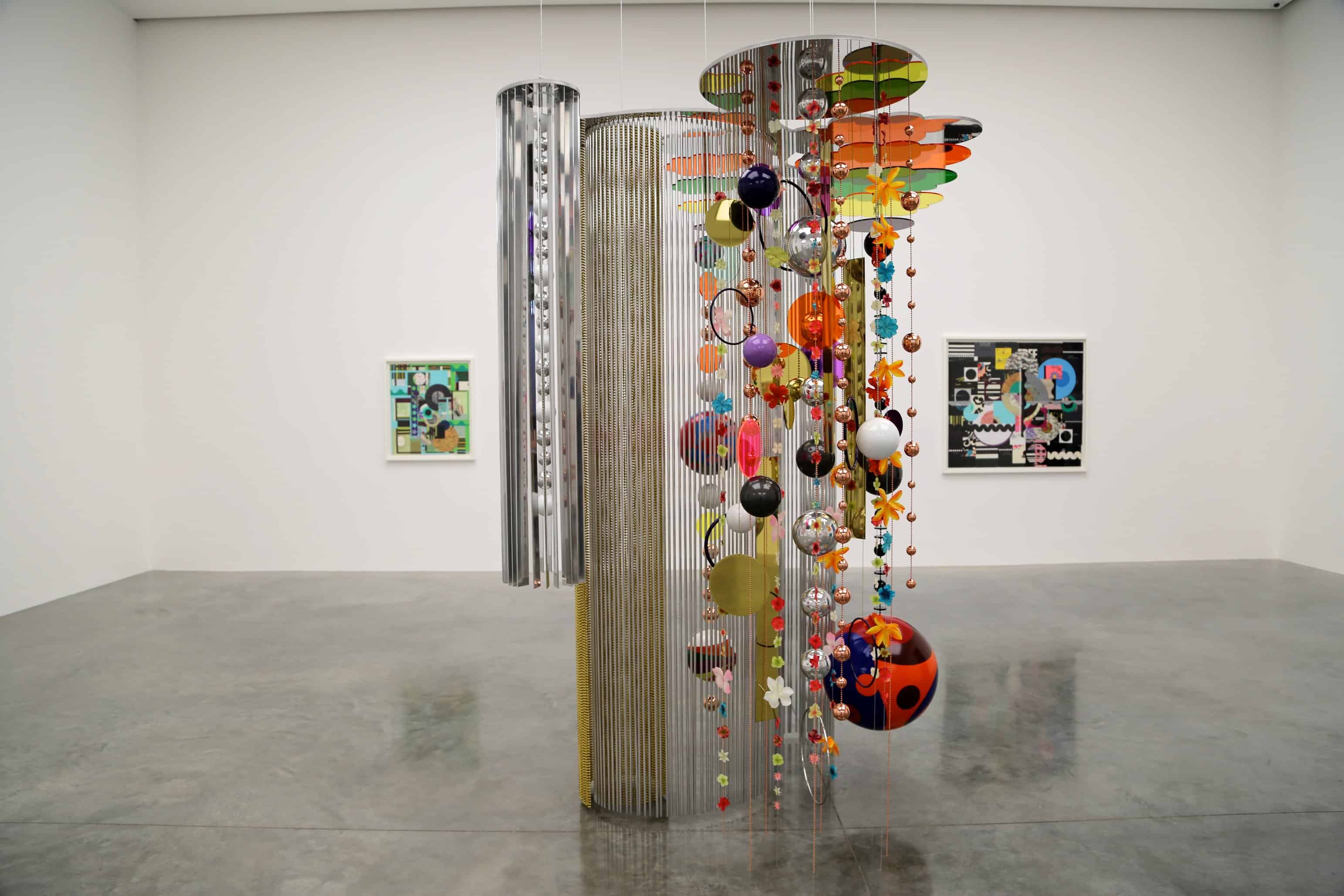
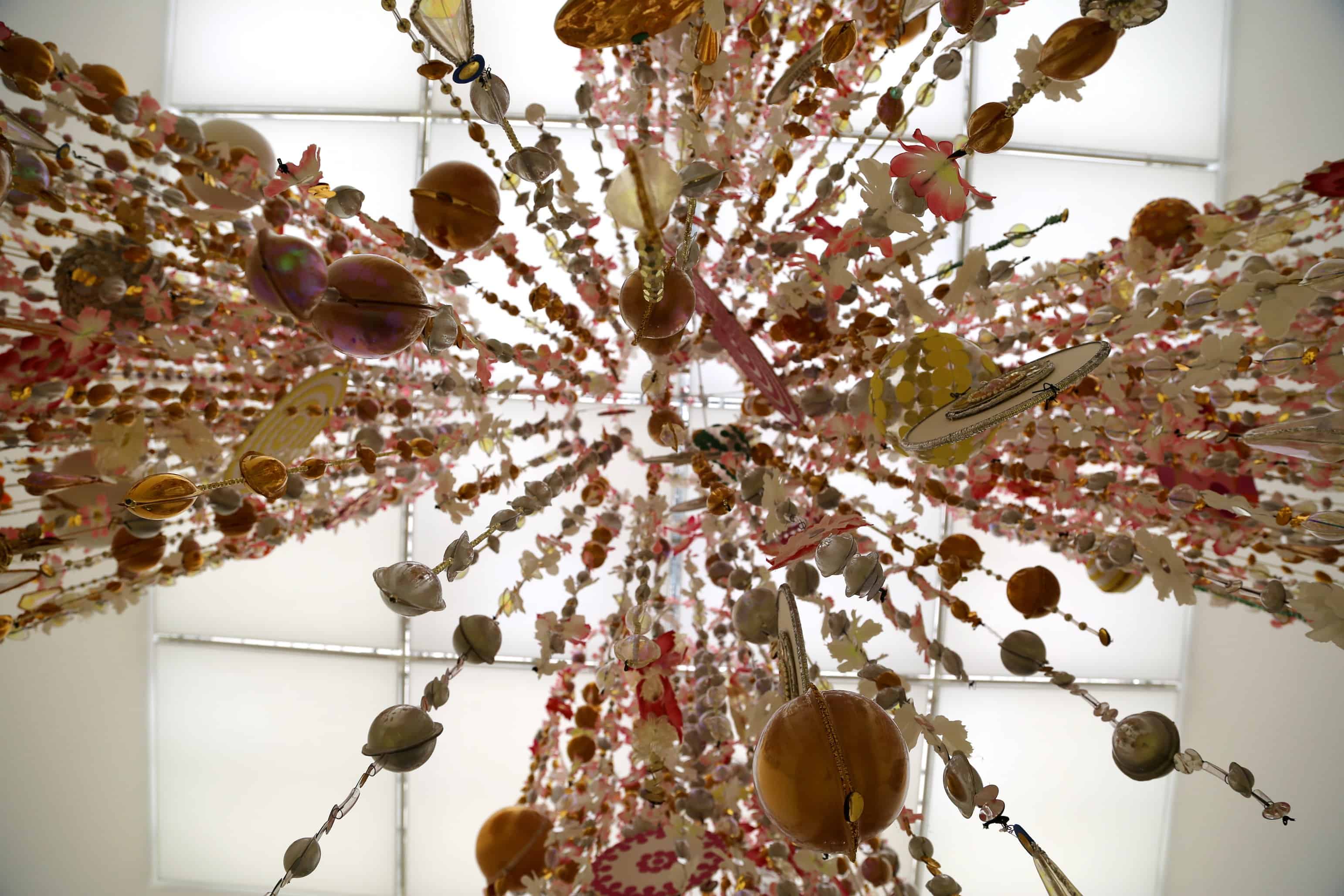
Originally created as part of a stage design for the Marcia Milhazes Dance Company. They form the staging for a choreographed performance entitled Guarde-Me translated as Save Me. It suggested the trials and tribulations of enduring love, the challenges, recovery and regeneration of a shared experience. There is a significant conceptual depth of range of emotions in the performance. Which can be perceived as a threshold contrast between the two domains of the space and the performance. Which the artist described as two waves of intensity that interact to comment on the circle of life.
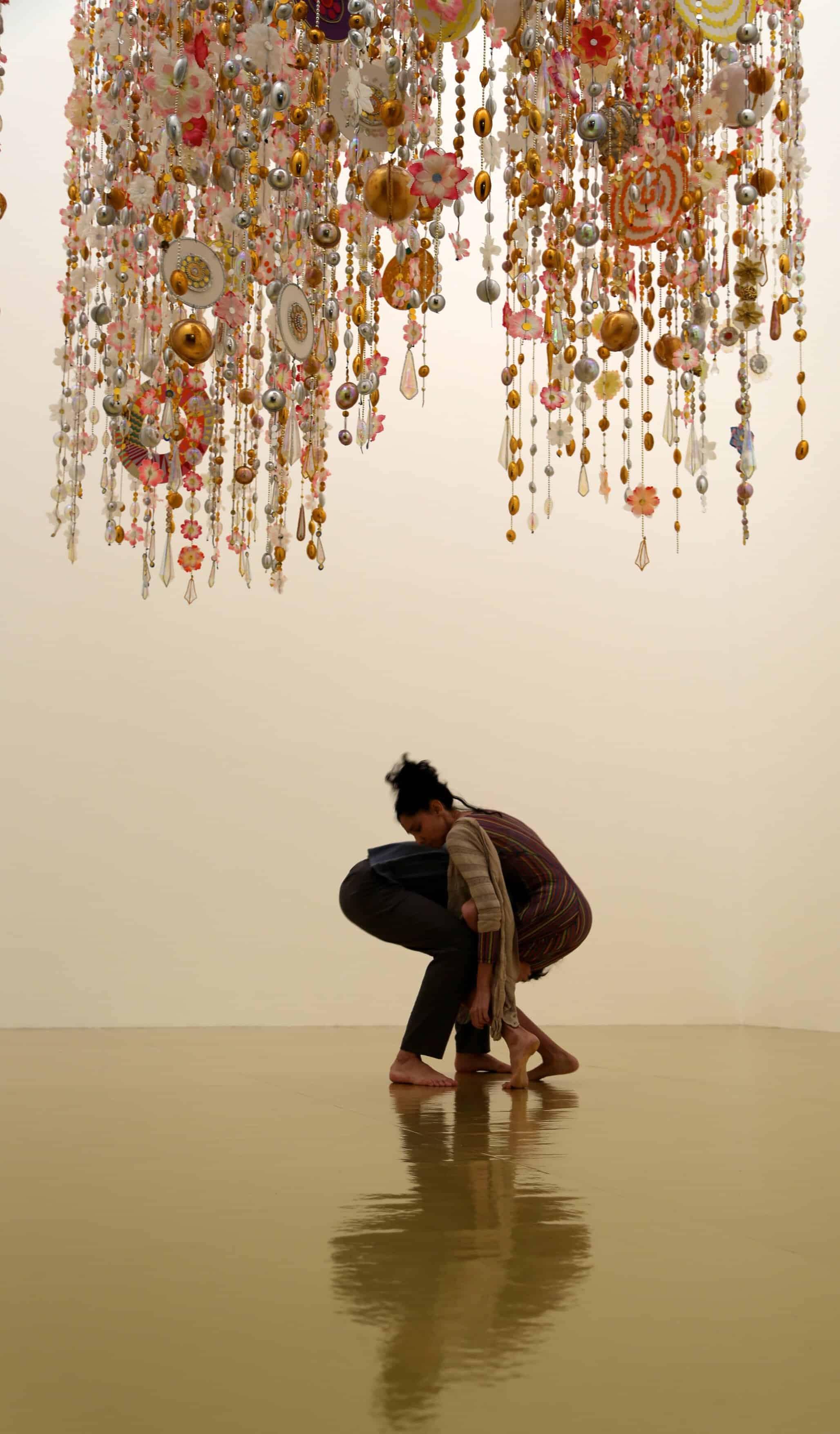
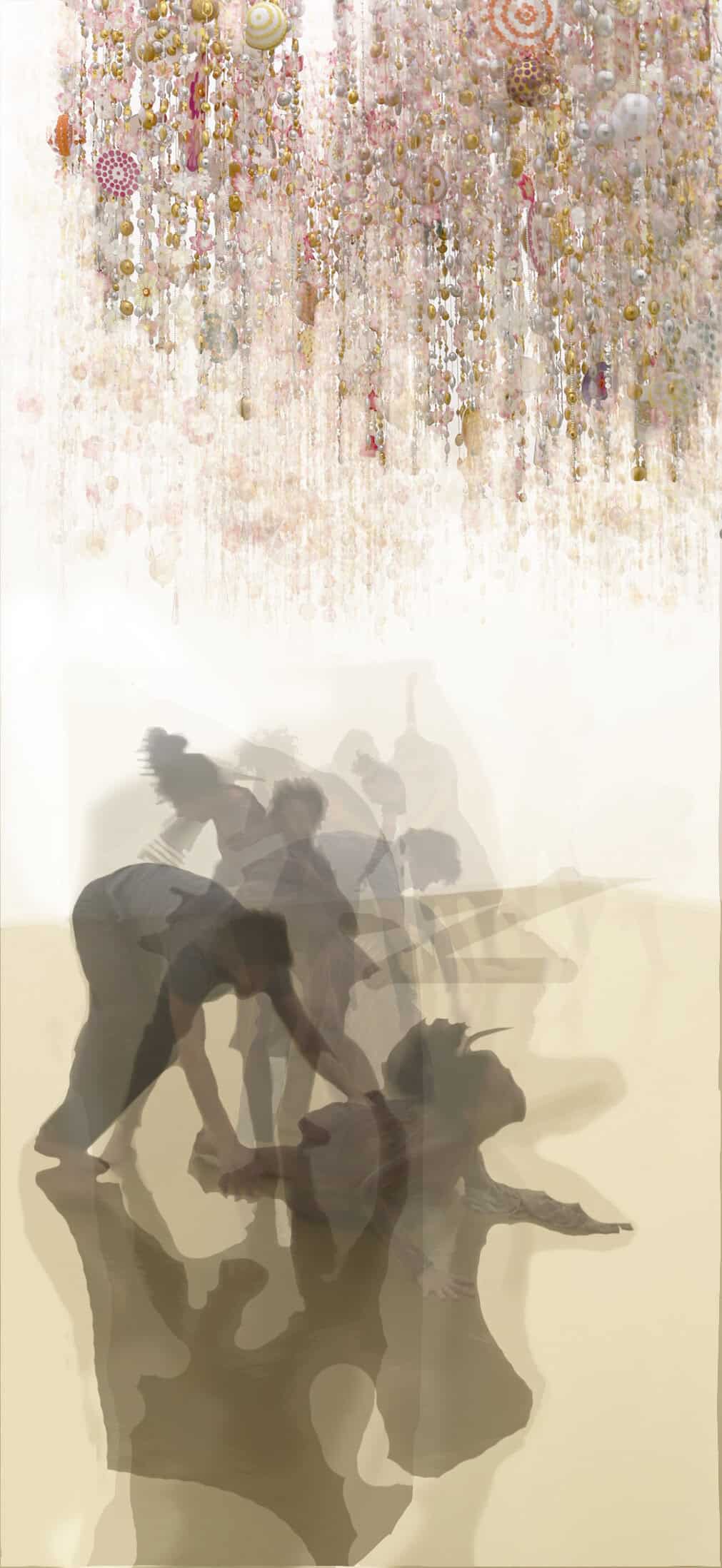
A seductive chase, the unspoken conversation, the emergent insecurities, the loss of individual identity, a struggle for freedom complimented with intense joy and celebration. The artist described how the performance interacted with the space being of contrast. That the intensity of actions, movements, actions and gestures in a short time highlighted the temporal difference between the set featuring the artwork as a passive backdrop. To the active interpretation, interaction and essential invasion of the performers.
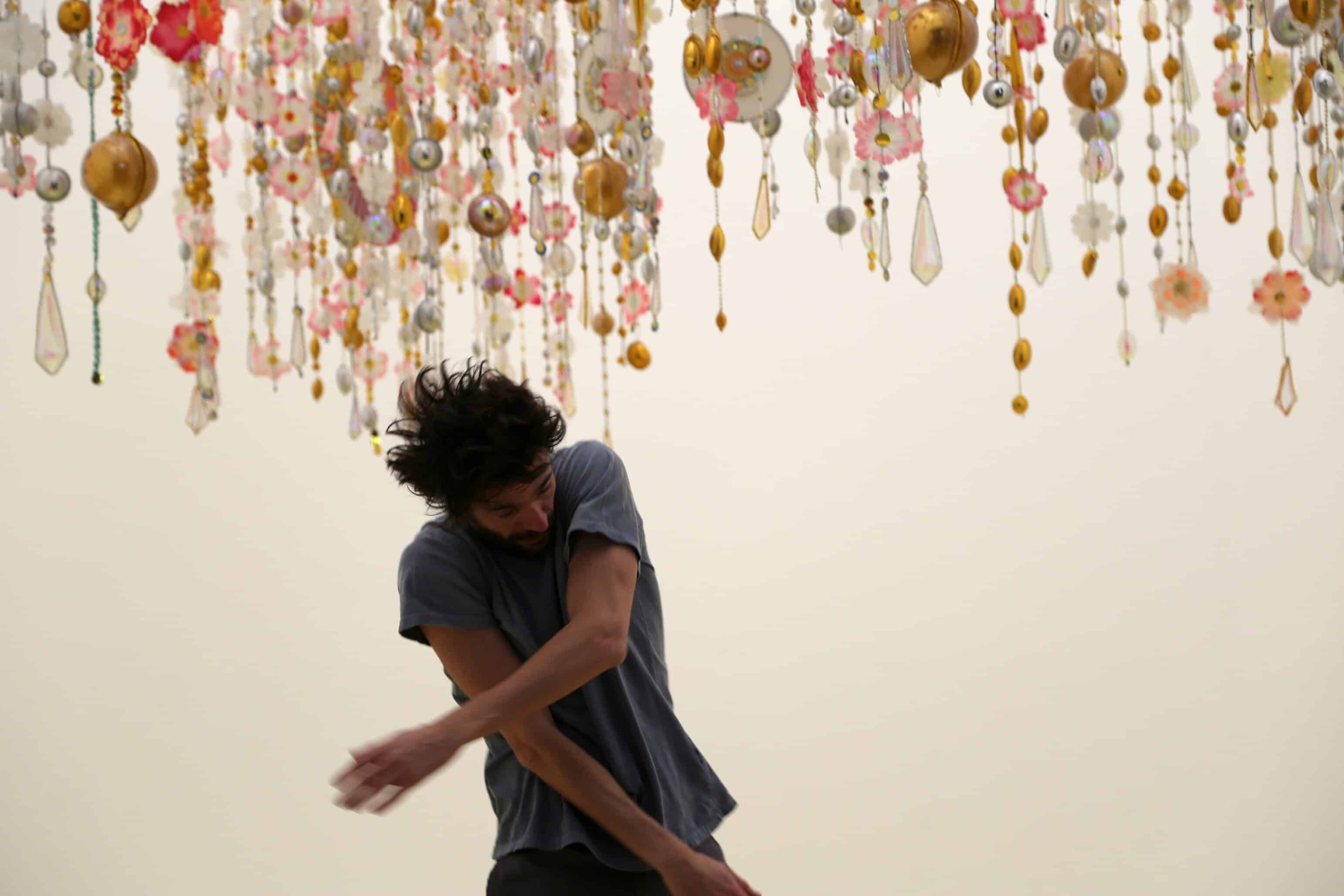
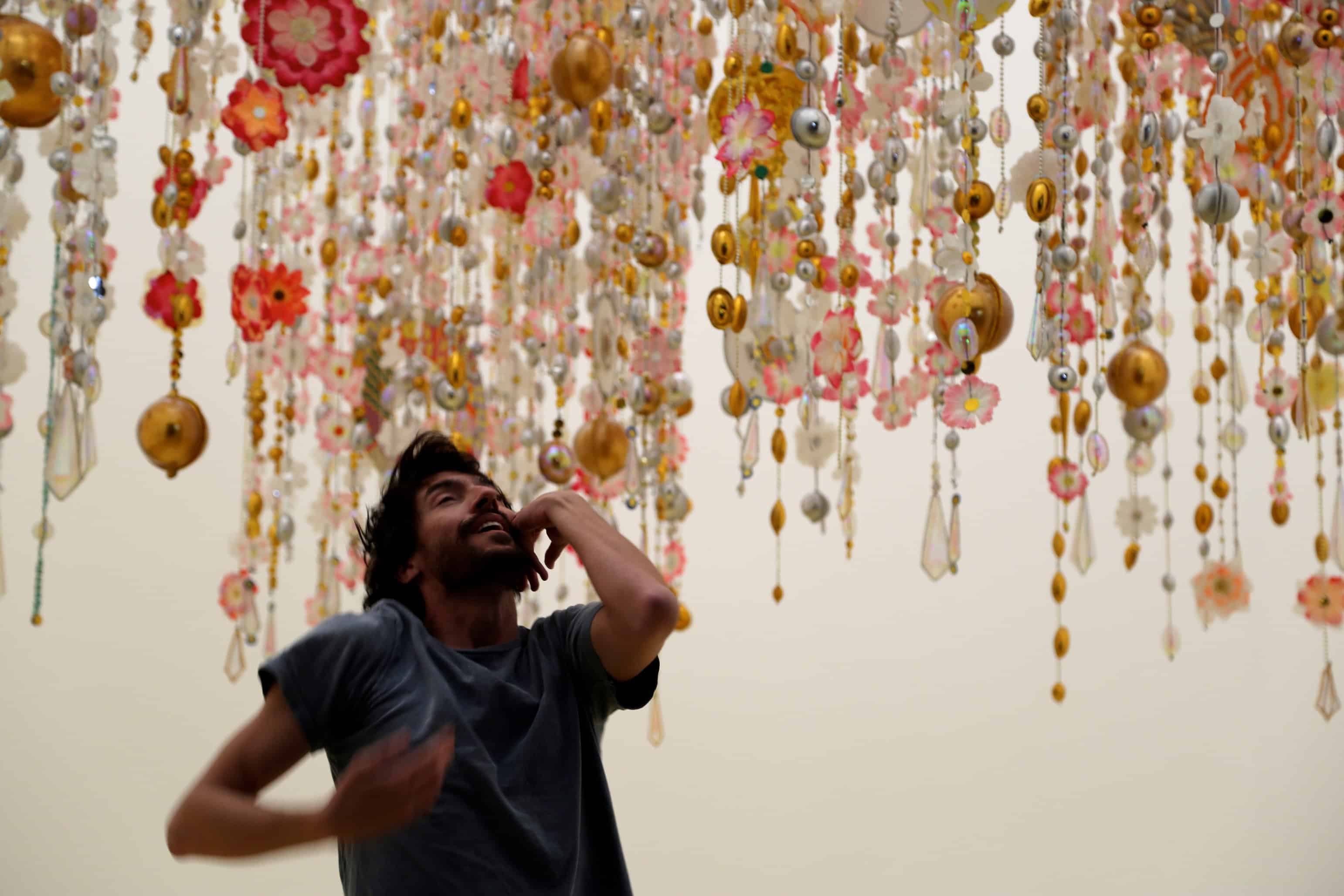
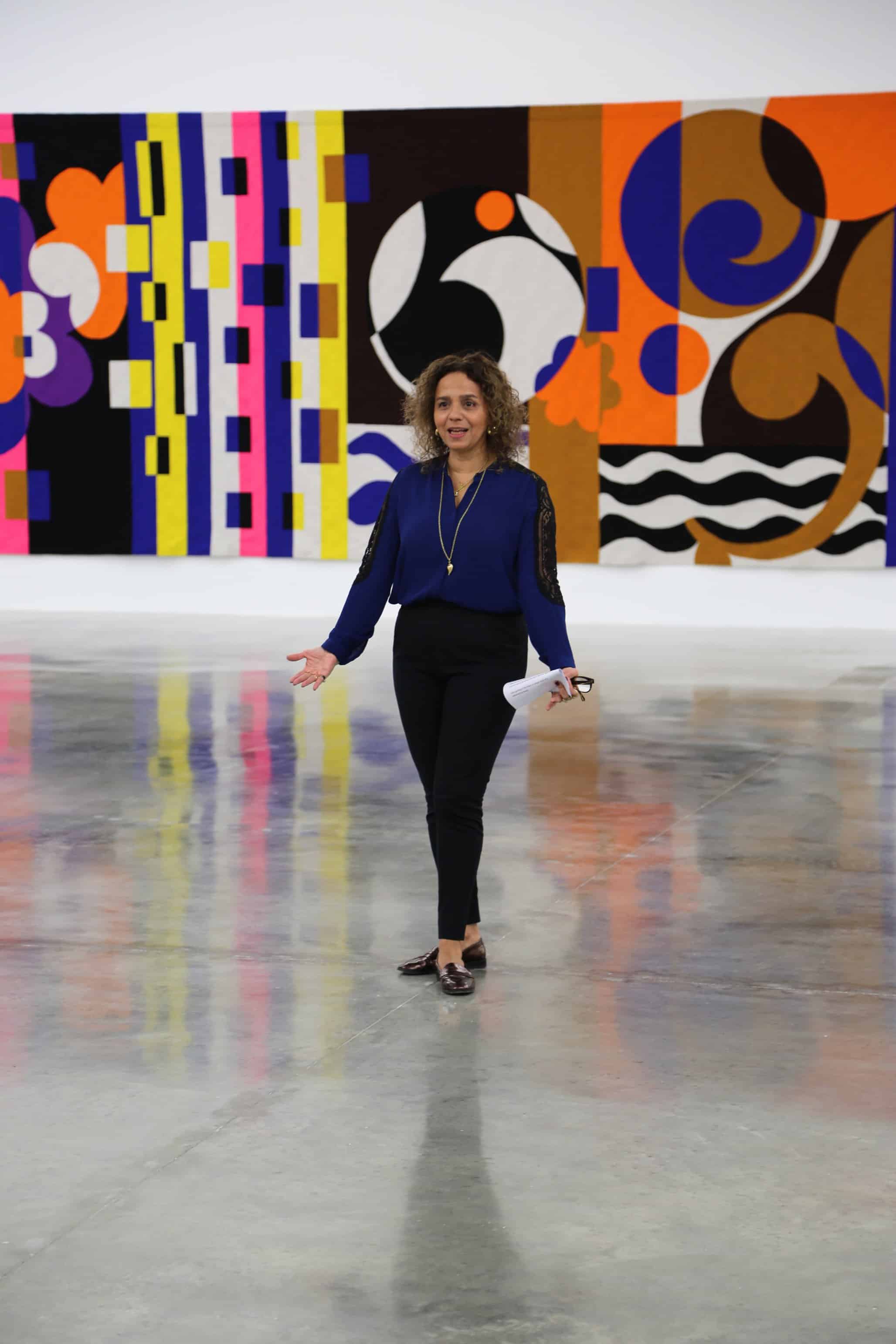
Beatriz Milhazes
Rio Azul
18 April – 1 July 2018
Open from Tuesday to Saturday 10am – 6pm and Sunday 12-6pm.
Admission is free!
White Cube
144-152 Bermondsey Street, London SE1 3TQ
whitecube.com
Share this post
Natasha Hall is an internationally recognized British artist with a doctorate in Contemporary Landscape Painting. She has university qualifications in the arts and the sciences who specializes in interdisciplinary collaborations with scientists, artists and the wider community to realize her projects. Through constantly exploring the limits between the arts and the sciences, from documenting the reality of being a patient, the layering of landscape and the interaction of climate change with historical accounts…she has exhibited, organised conferences and continues to be represented by the Es Baluard Museum of Contemporary Art, the Gabriel Vanrell Art Gallery in Palma de Mallorca, and is delighted to be the European Arts Editor for IRK Magazine.
Read Next

